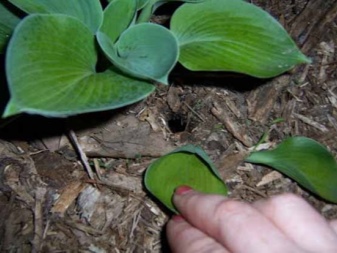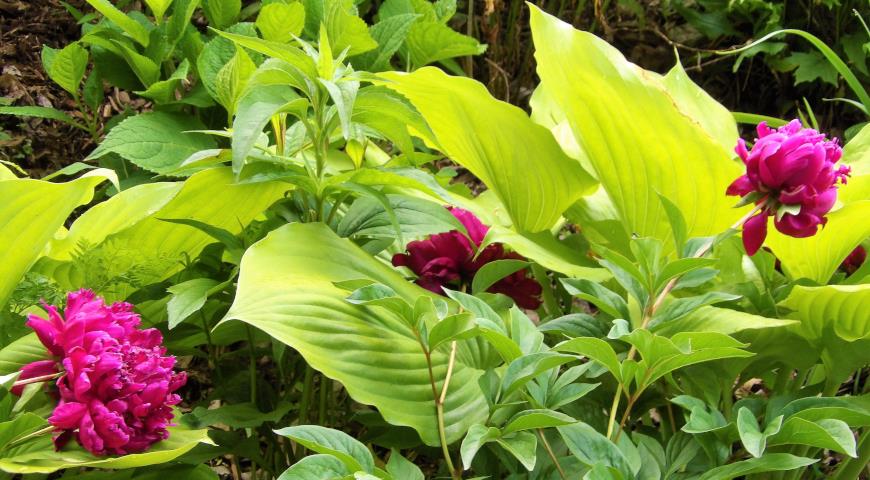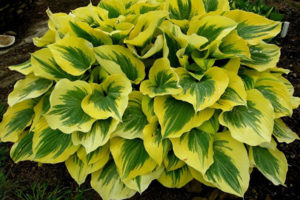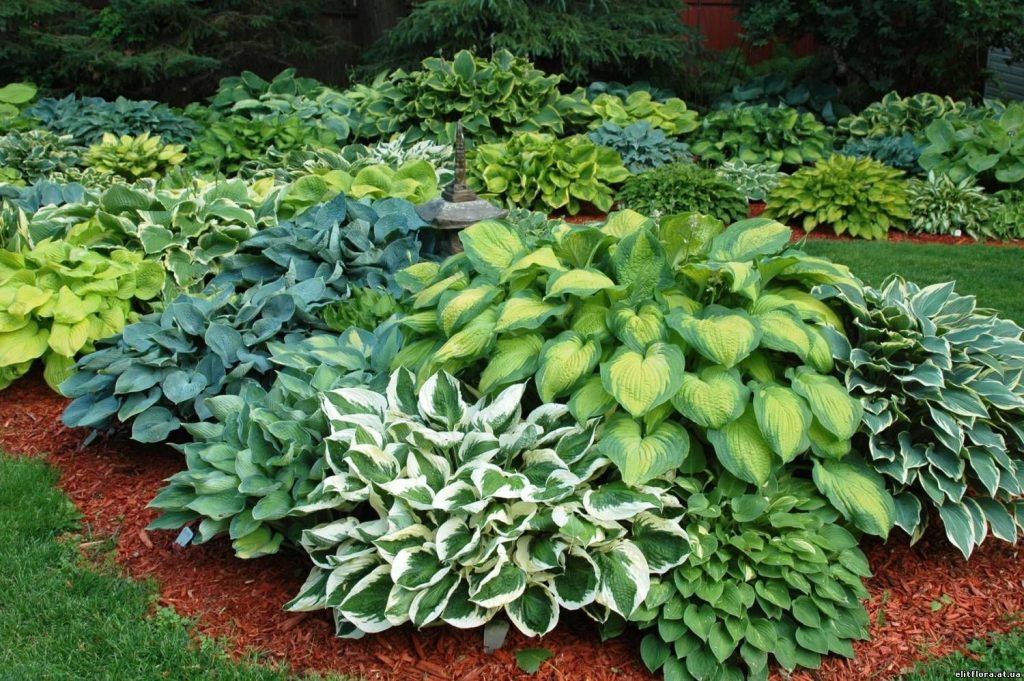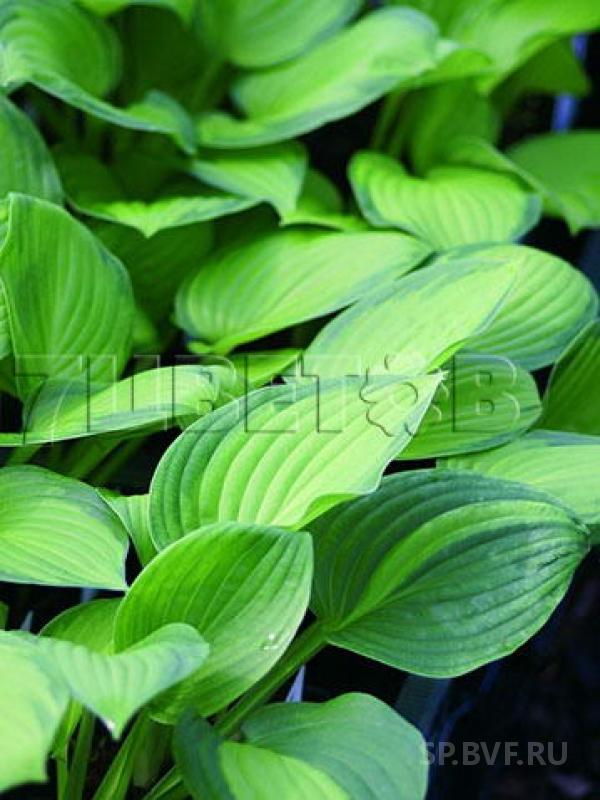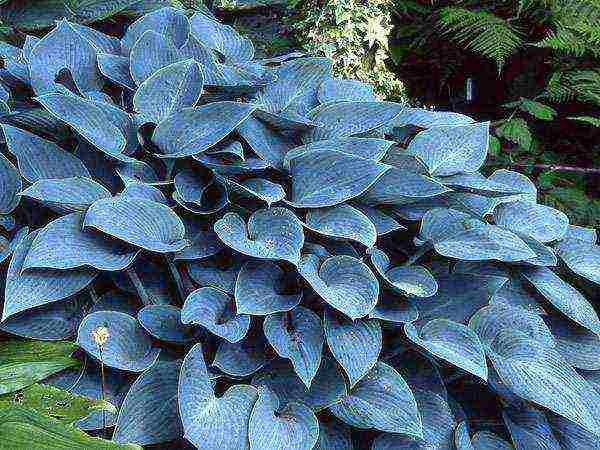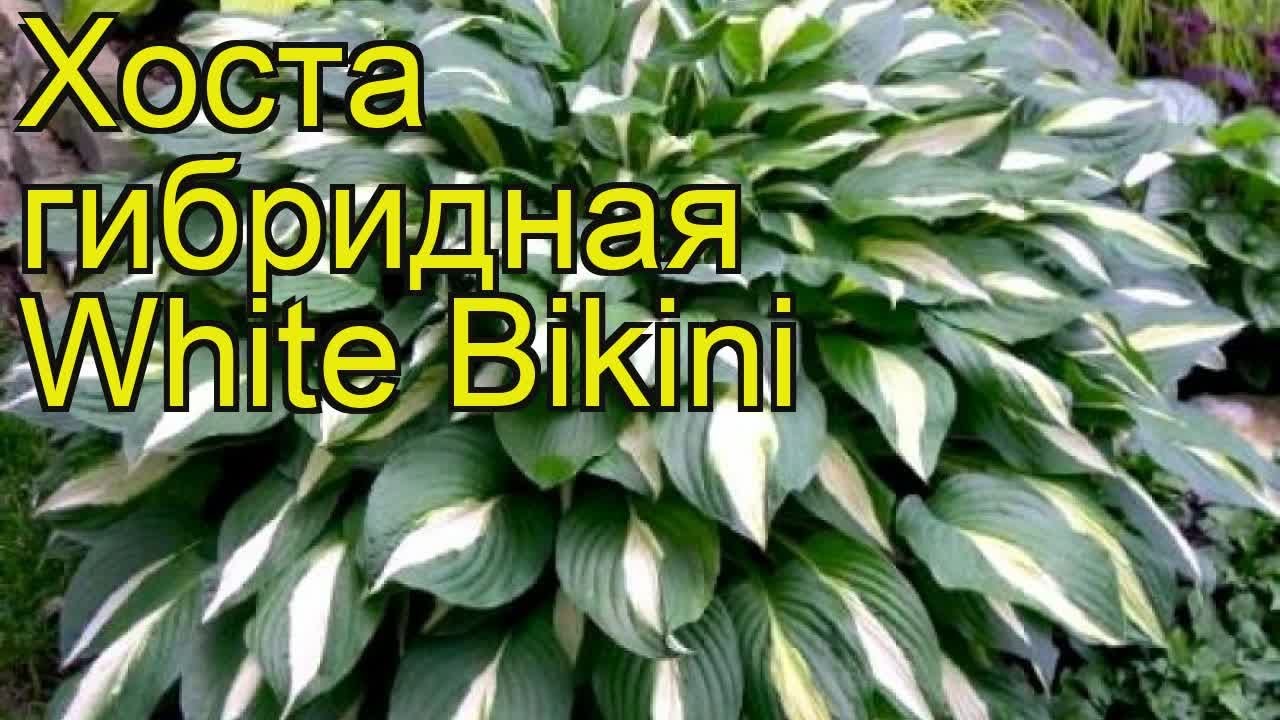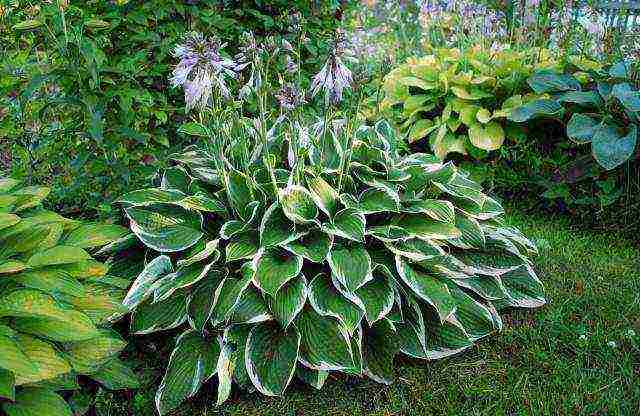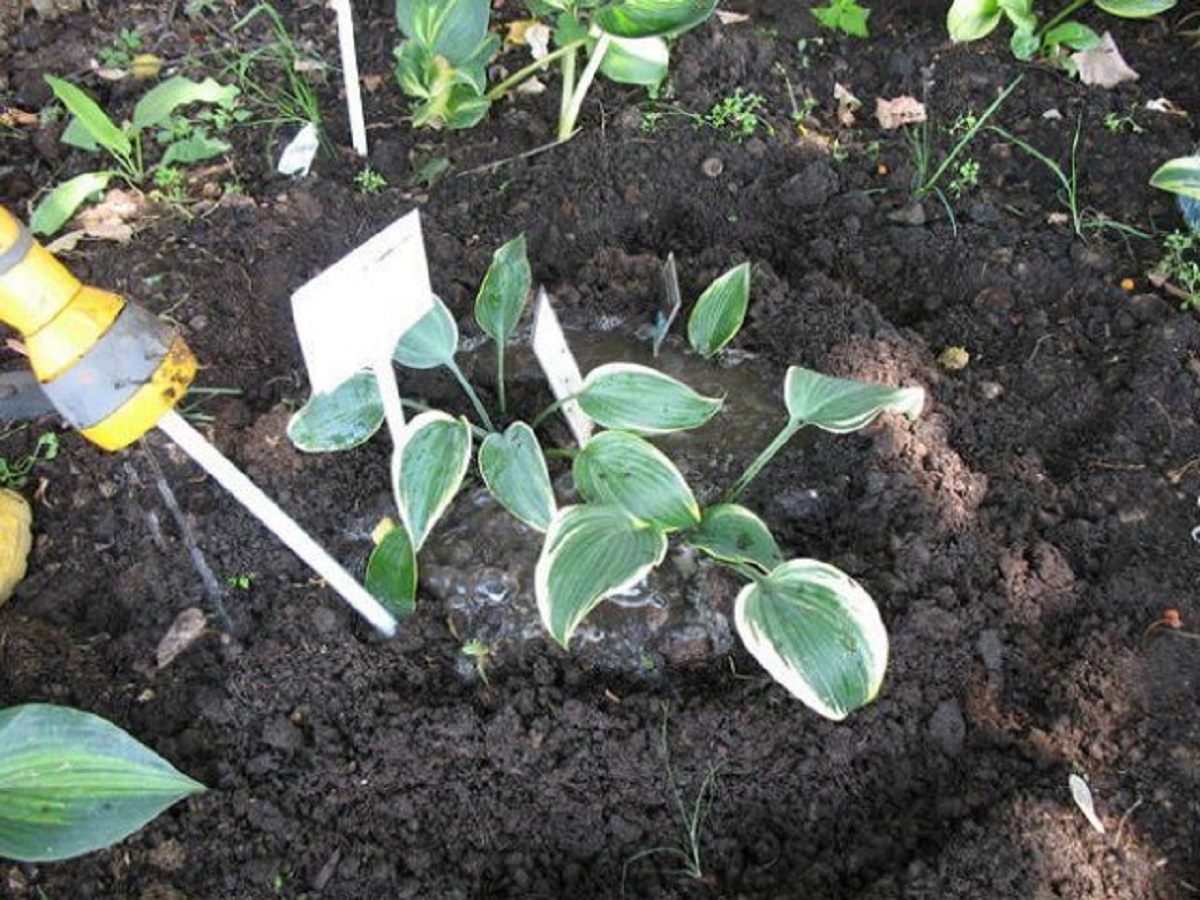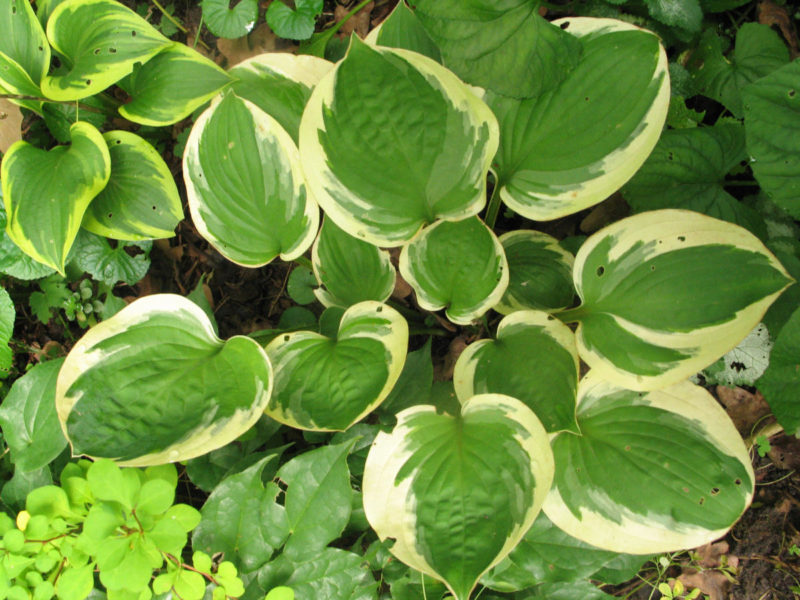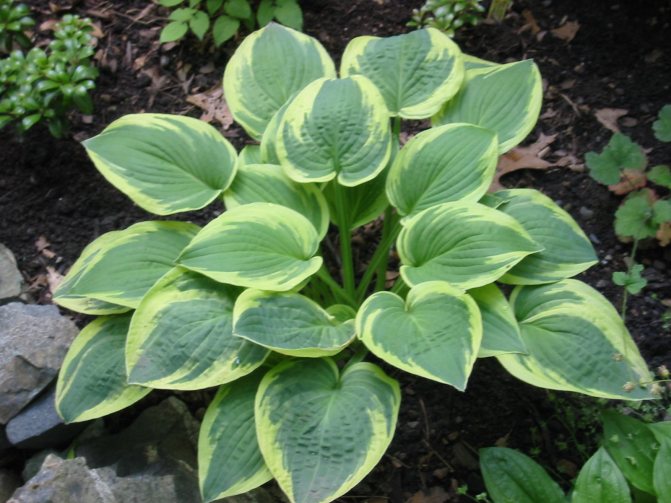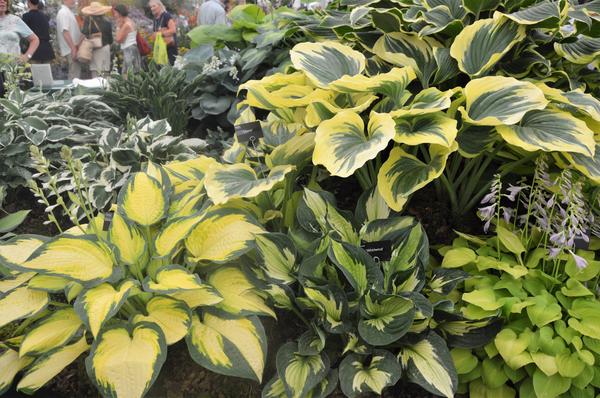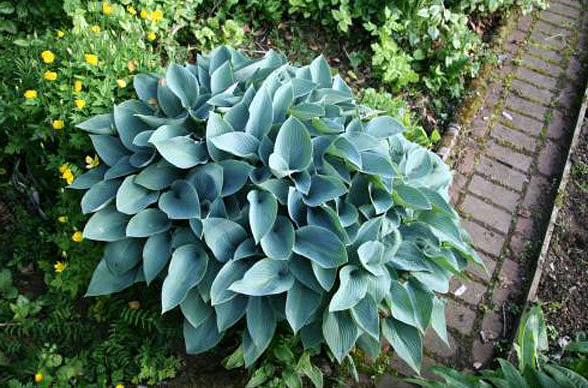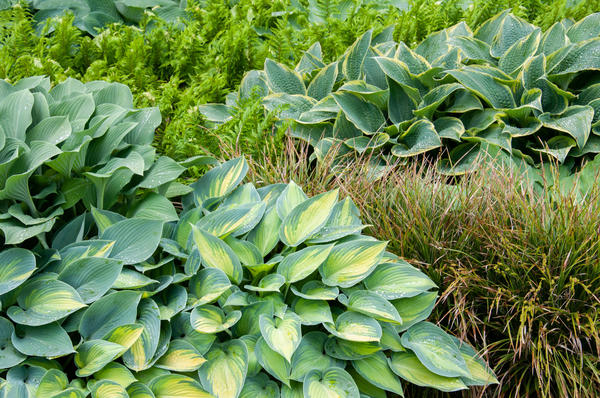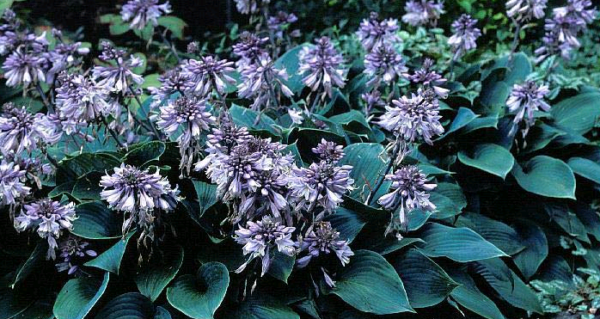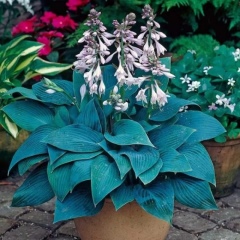Landing site hosts Halcyon
A correctly chosen place of the blue hosta variety in the garden will delight those around you with a luxurious color of foliage, abundant and long flowering. Features of landing hostsa blue:
- Wet areas of the garden, prolonged drought has a negative effect on the plant;
- The soil should be loose, with a large supply of nutrients, since plants can grow without replanting for 20 years;
Important. Spring mulching around hosta outlets with humus or compost, provides the roots of a perennial plant with the necessary moisture and nutrients
- For planting hosts, you should avoid areas where moisture stagnation is possible, you need to provide good drainage for planting blue hosts;
- The plant is demanding on light, prefers areas protected from direct sunlight.
If all the conditions are met for planting halcyon hosts, its flowers will acquire a deep blue color. They will be a great addition to the landscape of coniferous trees, among the fern thickets.
How hosta is applied in the garden
Due to the abundance and variety of varieties, the plant is almost universal. Miniature varieties are used to decorate borders, since they are not only ideal for this purpose, but also able to grow in one place for several years. Having decided to decorate garden paths with the help of a host, it should be borne in mind that in shaded places they lose their decorative features, and with prolonged exposure to direct sunlight, they get leaf burns.
This culture is used as a spectacular, lush ground cover. Having planted several different varieties next to each other, they get unusual carpet ornaments.
Due to the fact that in nature this plant often settles near water bodies, on the site it can be planted near a fountain, decorative pond or stream. A moisture-loving flower will feel great.
The main function of a host in landscaping is to fill in the voids and create a beautiful backdrop for ornamental crops. However, hosts in single landings are no less attractive. Planting several different varieties will help to diversify and revive such tapeworms.
Winning group plantings host with perennials with lush, delicate foliage. A perennial with cereals and sedge looks harmoniously. These plants emphasize the characteristics of each other, help to create original compositions.
The hosta is suitable for planting in a wooden tub and a narrow pot. This option is acceptable in mid-latitudes, where some varieties cannot withstand temperature extremes.
More information about how the hosta flower is reproduced, planting and caring for it in the open field is shown in the video below, which is especially useful for those gardeners who first decided to breed this crop on the site:
Types and varieties
Hosta hybrid in the garden
In nature, today there is a large number of hosta varieties and species of which number - at least 2,500. At the same time, gardeners are most often attracted by that hybrid host, whose leaves are multi-colored. It is them that summer residents buy in the market or in flower shops in order to decorate the landscape design of their site with it. A hybrid hosta differs from an ordinary one in that its bush grows much larger in diameter and the leaves are larger.
In the host's variety, varieties and species have leaves of completely different colors, so it happens:
- yellow host;
- hosta white;
- golden;
- blue;
- gray;
- two-color hosts;
- one-color;
- with stripes;
- with contrasting border.
Now you can find tricolor leaves on the hosta. The color of the leaves depends entirely on the type of plant.
The Whirlwind hosta variety has shiny white leaves and is bordered by a two-colored green border. Plants with wavy leaves are in vogue.
These host types are:
- Medusa;
- Cafypsa;
- Ckortreuse Wiggles.
Hostas, which have large leaves and long petioles, are not bypassed, namely:
- Sea Gold Star;
- Green Fontain.
These plants resemble fountains. Breeding of this culture is still being worked on at the University of Michigan. Breeders are trying to breed a plant that will have hosta foliage and a daylily flower. Such copies are very expensive and not everyone can afford.
In nurseries around the world, there are at least a dozen host varieties, as well as about four hundred hybrid host varieties.
Here you can see plants with foliage colors:

Veronica Lake
- gray green;
- blue;
- green;
- golden with white edging;
- golden;
- green-blue with a white border;
- white or gold with a bluish-green border;
- white or blue with a golden border.
There are hosta with leaves covered with spots or streaks, yellowing, greening, whitening shades.
In addition, plants of different sizes grow here:
- Dwarf plants that grow no more than 10 centimeters;
- Small in size, the height of which reaches no more than 20 centimeters;
- Plants of medium height grow up to 30 centimeters;
- Large hosts grow up to 45 centimeters in height;
- Giant plants grow over half a meter tall.
The host grows in the shade. Despite the fact that under these conditions its growth slows down, the plant itself becomes large and tall. Of all the plant species, more attention should be paid to the following varieties.
Stiletto

Stiletto
Refers to miniature plant species. The leaves of the plant are green with a light yellow border. It blooms in purple. It looks very impressive on the nursery.
Golden Tiara
It is a plant from low host species. It has green leaves with a golden border in the shape of a heart. The flowers are purple. Looks very beautiful among other plants.
Veronica Lake
A small hosta with bluish green leaves with a yellow border. It blooms with bells of pink-lilac color.
Jurassik Park
Large hosta with bluish-green wrinkled leaves. It grows at least one meter in height. It blooms with light purple flowers.
Lady Guinevere

Lady Guinevere
Or, more simply, Ginever. The plant grows to a height of no more than 60 centimeters. Her flowers are funnel-shaped, of different shades. The plant is shade-loving, so it should grow in the shade.




